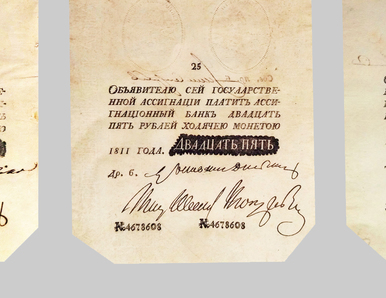Until the 19th century, soldiers of all armies ate what they could grab from the non-combatant population of the enemy country, and sometimes, from their fellow countrymen. If they were fortunate, they received ‘field rations’ in the form of crackers or cereals, which they themselves cooked in the campsite. The great military innovator Napoleon Bonaparte took care of this aspect of the soldier’s life; the first canned food was invented for his army. Shortly before his Russian campaign, he ordered 60 military field kitchens and commanded Marshal Davout, commander of the First Army Corps, to test them in combat conditions.
The troops of the “Iron Marshal” covered the withdrawal of the Grand Armee from Moscow, fighting off the Cossacks and partisans in rear-guard skirmishes. On the way, they abandoned all their supply trains and with them, the field kitchens, leaving those to their fate. One of them became the trophy of the Cossacks of Count V.V. Orlov-Denisov (1775-1843). It was captured in Gzhatsk district of Smolensk province.
The design of the field kitchen is simple and functional. On a single-axle and single-horse wagon with large wheels, a sturdy wooden frame with an iron firebox is installed. The copper boiler above it is mounted on an independent suspension, so that it always maintains a horizontal position. It is possible to transport cooked food in it and feed the soldiers immediately after stopping for rest. In the front box under the coachman’s seat, firewood and sections of a folding table were transported. If the horse was unharnessed out of such a wagon, it would turn over. To prevent such an accident, the shafts were equipped with additional stops that fixed the kitchen in a horizontal position.
Now it became clear how it was possible to ensure the famous maneuverability of the Napoleonic army in the most severe conditions. The brave guards, cavalry and grenadiers were always quickly and timely fed, so they didn’t have to stop on the march for the sake of self-supply. The soldiers were provided with hot food and fresh bread, which raised their combat readiness to unprecedented heights. However, the crossing on the Berezina in December 1812 was managed by only 2,000 retreating combatants. Many Frenchmen died not from bullets and sabers, but from starvation, having lost their kitchens.
This exhibit is unique. This is the only field kitchen that has survived from the very first batch. Its design became the pattern for all similar units to be used later by the European armies. In Russia, they were first introduced only in 1896. Later, they were improved and finally tested during the Russo-Japanese War of 1905. Today we see the ancestor of all field kitchens in the museum.
The troops of the “Iron Marshal” covered the withdrawal of the Grand Armee from Moscow, fighting off the Cossacks and partisans in rear-guard skirmishes. On the way, they abandoned all their supply trains and with them, the field kitchens, leaving those to their fate. One of them became the trophy of the Cossacks of Count V.V. Orlov-Denisov (1775-1843). It was captured in Gzhatsk district of Smolensk province.
The design of the field kitchen is simple and functional. On a single-axle and single-horse wagon with large wheels, a sturdy wooden frame with an iron firebox is installed. The copper boiler above it is mounted on an independent suspension, so that it always maintains a horizontal position. It is possible to transport cooked food in it and feed the soldiers immediately after stopping for rest. In the front box under the coachman’s seat, firewood and sections of a folding table were transported. If the horse was unharnessed out of such a wagon, it would turn over. To prevent such an accident, the shafts were equipped with additional stops that fixed the kitchen in a horizontal position.
Now it became clear how it was possible to ensure the famous maneuverability of the Napoleonic army in the most severe conditions. The brave guards, cavalry and grenadiers were always quickly and timely fed, so they didn’t have to stop on the march for the sake of self-supply. The soldiers were provided with hot food and fresh bread, which raised their combat readiness to unprecedented heights. However, the crossing on the Berezina in December 1812 was managed by only 2,000 retreating combatants. Many Frenchmen died not from bullets and sabers, but from starvation, having lost their kitchens.
This exhibit is unique. This is the only field kitchen that has survived from the very first batch. Its design became the pattern for all similar units to be used later by the European armies. In Russia, they were first introduced only in 1896. Later, they were improved and finally tested during the Russo-Japanese War of 1905. Today we see the ancestor of all field kitchens in the museum.



